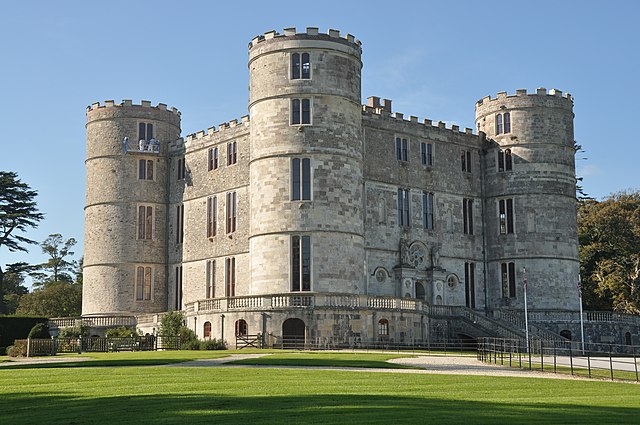Lulworth Castle, in East Lulworth, Dorset, England, situated south of the village of Wool, is an early 17th-century hunting lodge erected in the style of a revival fortified castle, one of only five extant Elizabethan or Jacobean buildings of this type. It is listed with Historic England as a scheduled monument. It is also Grade I listed. The 18th-century Adam style interior of the stone building was devastated by fire in 1929, but has now been restored and serves as a museum. The castle stands in Lulworth Park on the Lulworth Estate. The park and gardens surrounding the castle are Grade II listed with Historic England.
Lulworth Castle after restoration
Lulworth Castle in August 1968, prior to renovation
Grade I listed RC Chapel of St Mary, built to look like a house
Entrance to the castle.
Wool is a large village, civil parish and electoral ward in south Dorset, England. In the 2011 census the parish – which includes Bovington Camp army base to the north – had 2,015 households and a population of 5,310. The village lies at a historic bridging point on the River Frome, halfway between Dorchester and Wareham. Woolbridge Manor House, a 17th-century building, is a prominent feature just outside the village and the location of Tess's honeymoon in Thomas Hardy's Tess of the D'Urbervilles. Other prominent features of the village include the medieval church of Holy Rood, the railway station on the South West Main Line from London Waterloo to Weymouth, and the thatched cottages along Spring Street.
High Street, Wool
Woolbridge Manor






